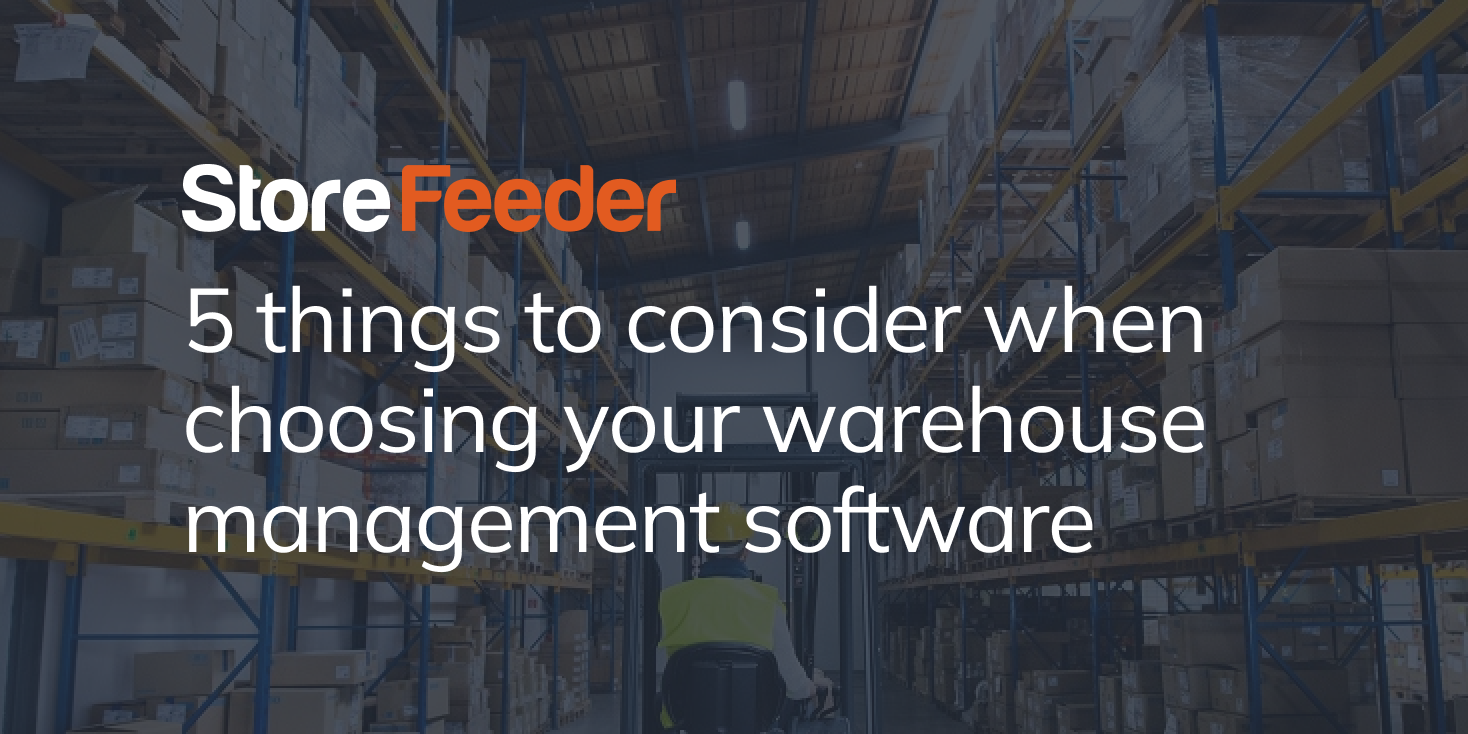
5 things to consider when choosing your warehouse management software
November 13, 2025
When your eCommerce operation starts to scale, your warehouse becomes the heart of your business. Orders, returns, dispatch, and inventory all flow through it, and the right warehouse management software (WMS) can make or break that flow.
With so many e-Commerce warehouse management systems promising seamless automation and real-time visibility, it’s easy to get lost in the noise. To help you cut through it, here are five key things to think about when choosing a warehouse management system, and how leading platforms stack up.
1. Flexibility that grows with your business
A warehouse management system shouldn’t just fit your business today, it should grow with it.
Some tools in the market, like ChannelGrabber or Base, work well for smaller retailers but often hit their limits when order volumes rise or when new sales channels are added.
StoreFeeder, however, is built to scale. Unlimited users, unlimited channels, and rolling 30-day agreements mean you’re never boxed in by your software. Whether you’re managing 100 or 10,000 orders a day, StoreFeeder scales with you, making it ideal for multi-channel warehouse management and growing operations that need freedom to expand.
2. True warehouse control, not just stock syncing
Many platforms claim to offer “warehouse management,” but in practice, they only handle inventory syncing. True warehouse inventory management software gives you control over every process - from pickwave management and location scanning to returns and replenishment.
Solutions like Veeqo tend to offer only basic warehouse features such as barcode scanning and stock sync.
StoreFeeder, by contrast, delivers advanced warehouse automation software designed to optimise every stage of fulfilment. Guided pick routes, real-time location tracking, and mobile scanning tools help warehouse teams work faster and more accurately - no workarounds required.
3. Transparent pricing (without hidden extras)
Pricing can be one of the biggest pitfalls when choosing a warehouse management system. Some providers charge per channel, per user, or even per order, meaning costs grow faster than your revenue. Others bundle essential tools, like forecasting or support, into expensive add-ons.
Aim to choose a provider that keeps things simple. StoreFeeder’s transparent, revenue-based pricing includes all the core features you need from day one. There are no forced carrier contracts or premium tiers for basic functions; instead, StoreFeeder uses predictable pricing that scales with your business.
So, when making a smart choice for any company, look for reliable warehouse software for eCommerce without the hidden costs.
4. Reliable multi-channel integration
A modern eCommerce operation depends on selling across multiple channels, from Amazon, eBay, Shopify, TikTok Shop, and more.
Some systems, including Veeqo, perform strongly with Amazon but offer limited flexibility for other marketplaces or couriers. Others, like Base, require manual setup or external plug-ins to support additional integrations.
The best warehouse management software should handle this complexity effortlessly. StoreFeeder stands out with deep, native integrations across all major sales channels and couriers, meaning fewer manual imports, fewer sync errors, and faster, more reliable order fulfilment.
5. Forecasting, reporting, and continuous improvement
A thorough warehouse management software comparison reveals the reality: the best systems don’t just help you process today’s orders - they help you prepare for tomorrow’s.
Basic tools often require exporting data to spreadsheets or paying for separate forecasting modules. Base and Linnworks, for example, typically treat demand forecasting as a premium feature.
Look for a software with advanced forecasting and reporting as standard. With StoreFeeder, you can analyse stock trends, forecast demand, and optimise purchasing, all from within the same platform. That means smarter buying decisions, fewer stockouts, and a warehouse that runs on insight rather than instinct.
Not all WMS are delivered equally.
Every warehouse management system promises efficiency, but not all deliver it equally.
If you’re running a smaller operation with limited SKUs and simple fulfilment workflows, lighter systems might be sufficient. But as soon as your business starts scaling (more orders, more channels, more complexity) you’ll need warehouse software designed for growing eCommerce businesses.
StoreFeeder brings together the automation, flexibility, and advanced WMS capabilities that modern eCommerce retailers rely on. It’s not about flashy features; it’s about dependable performance, scalable pricing, reliable customer service, and the confidence that your warehouse can keep up with your growth.
Book your free demo to learn more and find out how we can help you scale.
